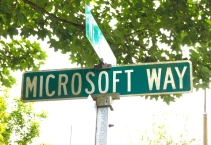Self-Service Site Creation is not working in SharePoint 2013
28/05/2013 Leave a comment
Assume that you have installed SharePoint 2013 and configured your MySite Host Application . And Enabled Self-Service Site Creation feature on your MySite Host Application as described following article :
http://technet.microsoft.com/en-us/library/ee624362.aspx#enableselfsvc
To enable self-service site creation for the web application
1.Verify that you have the following administrative credentials:
To enable self-service site creation, you must be a member of the Farm Administrators group on the computer running the SharePoint Central Administration website.
2.In Central Administration, in the Application Management section, click Manage Web applications.
3.On the Web Applications page, select the web application that you created to host My Sites.
4.On the Web Applications tab, in the Security group, click Self-Service Site Creation.
5.In the Self-Service Site Creation Management dialog box, in Site Collections, select On. Optionally, in Quota template to apply, select a quota template.
6.In Start a Site, choose one of the following options:
a.Prompt users to create a team site under so users can create team sites from their My Site to use site feeds.
b.Be hidden from users if you do not want users to create team sites from their My Sites to use site feeds.
7.Click OK to finish.
Perform these additional steps to configure permissions for users to create team sites from their My Sites to use site feeds.
1.In the Policy group, click Permission Policy.
2.On Manage Permission Policy Levels dialog box, click Add Permission Policy Level.
3.Type a name for the permission policy.
4.Under Permissions, in Site Permissions, select the Grant option for Create Subsites – Create subsites such as team sites, Meeting Workspace sites, and Document Workspace sites.
5.Click Save.
6.In the Policy group, click User Policy.
7.On Policy for Web Application dialog box, click Add Users.
8.On Add Users, in Zones select (All Zones), then click Next.
9.In Choose Users, enter the user names of the users that you want to create team sites from their My Site to use site feeds. If all users can create team sites from their My Site to use site feeds, click the Browse icon. In Select People and Groups, click All Users, then click Everyone. Click Add, and then click OK.
10.In the Choose Permissions section, select
But the problem is even you did the configuration is correct , Still that the users doesnt use their mysite without their personal sites and looks the Self-Service Site Creation is not working. When you click Sites, Skydrive, NewsFeed links you have facing a blank page for it.
When you checked the ULS logs , you are facing following error ;
Skipping creation of personal site from MySitePersonalSiteUpgradeOnNavigationWebPart::CreatePersonalSite() because one or more of the creation criteria has not been met. [SPWeb Url=https://blog.bugrapostaci.com/Person.aspx?accountname=MyDomain\bugra] https://blog.bugrapostaci.com/Person.aspx?accountname=MyDomain\bugra] Self-Service Site Creation == True Can Create Personal Site == False Is user licensed == False Storage&Social UPA Permission == True Site or Page or Web Part is in design mode == False
If you facing this , Looks that you have a problem with User License.
“In Office SharePoint Server 2007 and SharePoint Server 2010, when companies purchased a SharePoint Server Enterprise client access license (CAL) and deployed a server running SharePoint Server Enterprise, all users who accessed that server could use the full enterpr ise feature set. There was no way to determine the CAL that a specific user had. The only way to ensure that only users who had an Enterprice CAL accessed Enterprise features was to have separate Enterprise and Standard server deployments.
In SharePoint 2013, farm administrators now can assign licenses to users and enable license checks. WIth this new functionality, you can ensure that only users with the appropriate license can use a specific feature. This SharePoint Server license implementation is managed by using new Windows PowerShell cmdlets. By default, licensing is disabled in SharePoint Server. Administrators can opt to enable it by using Windows PowerShell.”
http://technet.microsoft.com/en-us/library/jj219627.aspx
if in your system new licensing feature of SharePoint 2013 was enabled but not configured. (In that article also contains how to configure licensing feature) You may probably facing this issue.
For resolving this you have two options.(You must use Windows PowerShell to create mappings for license types and to return user license types. There is no user interface for this feature.)
1) Configure Licensing feature correctly.
Get-SPUserLicense
$a = New-SPUserLicenseMapping -SecurityGroup <yoursecuritygroup> –License Enterprise
$a | Add-SPUserLicenseMapping
Enable-SPUserLicensing
2) Disable Licensing feature
Disable-SPUserLicensing





